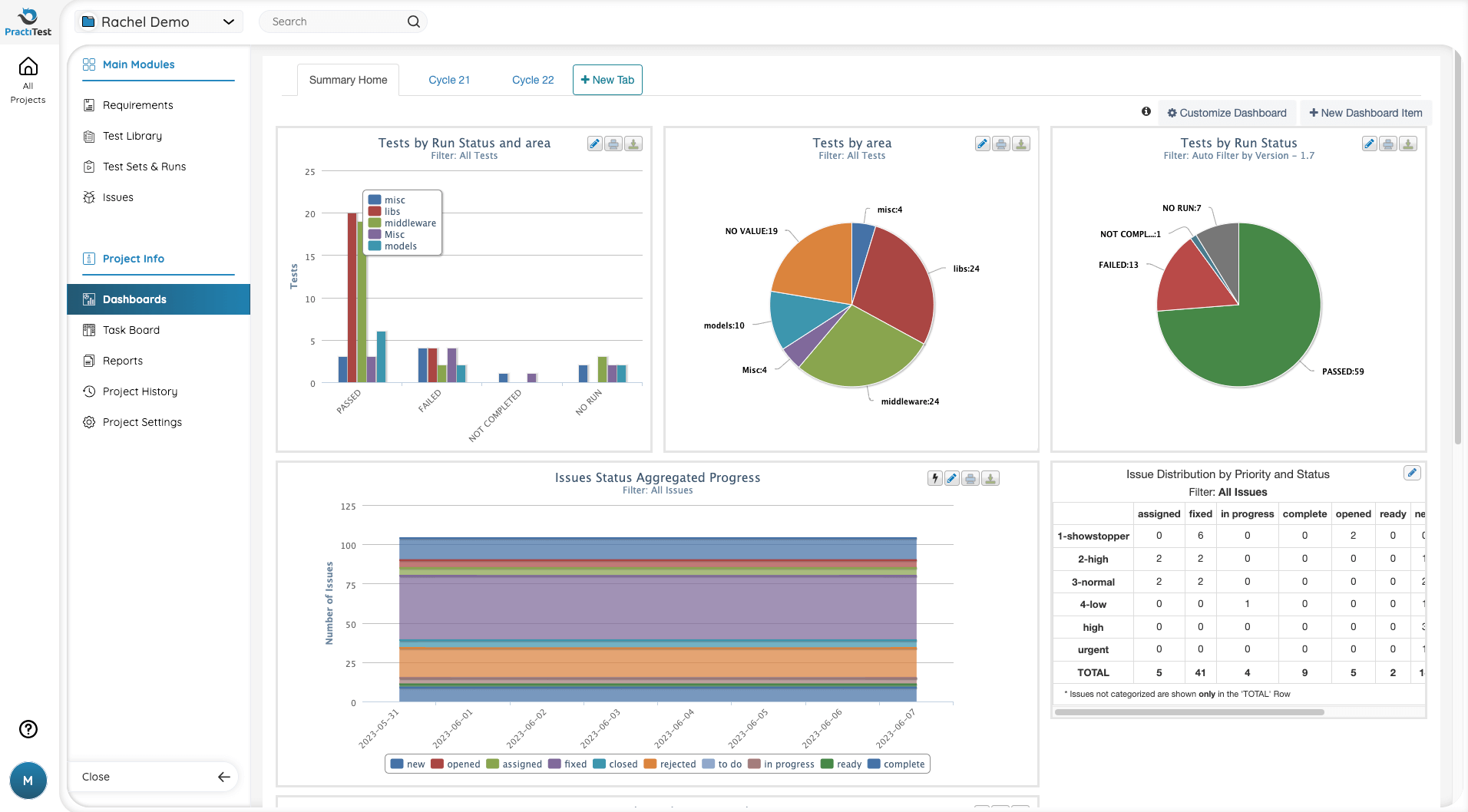How to Effectively Onboard & Train Software Testers Remotely
In This blog
For the tech industry, remote work isn’t something new. Even before working from home became the new norm due to the COVID-19 pandemic, some tech companies had already fostered a hybrid working environment, giving employees greater flexibility. Many large organizations are also familiar with remote working since they employ offshore teams or outsourced team members like QA testers. Working in a remote environment has also become a critical aspect for the employees. According to the 2023 State of Remote Work by Buffer, 98% of the respondents would prefer to work remotely at least some of the time.
But it’s not all sunshine and roses. Working from home can present several challenges that companies may not have dealt with before, especially regarding new team members’ training. QA Managers should create a dedicated training program that is suitable for remote workers, ensuring optimal productivity and success. Read on to explore the pros and cons of remote training, which points should managers focus on, and practical tips for creating effective training plans.

The Importance of the Right Training for Remote Testers
As more and more companies hire QA testers from across the globe or use offshore outsourcing teams, the importance of onboarding and training processes becomes even greater. The unique challenges remote employees face could negatively impact the training process, which will impact the employee’s performance. In order to account for the lack of face-to-face interaction with managers and colleagues, there is a need to create clear communication channels to guide new employees with company policies and work procedures.
Advantages of Remote Software Tester Training
Remote training for QA testers has multiple benefits that can make the onboarding process more efficient:
-
Maximum Flexibility - Remote training enables both employees and managers to have better flexibility. This breaks any geographical obstacles that are a part of in-person training. Even if the manager is unavailable, employees can still continue their onboarding process simply with a stable internet connection.
-
Tailored Learning Process - A benefit remote learning offers is the ability to plan and make on-the-fly changes. Based on each team member’s speed, experience, and skills, new employees can manage their time more efficiently and give greater weight to weak areas. This is more difficult to do when new testers are part of a group of new employees who are all learning together at the same pace.
-
Acquiring Technical Skills - Remote training provides essential digital literacy and technical skills. As new employees progress, they become proficient in various collaborative tools and remote work technologies.
Challenges of Remote Software Tester Training
Here are some difficulties that testers and managers can face when during remote training:
-
Communication - Remote training requires timely communication and challenges may arise in ensuring effective communication between trainers and trainees. Since there is limited face-to-face interaction, managers should find ways to keep communication channels open to verify important staff questions have not gone unnoticed. Additionally, remote employees may experience feelings of isolation or disconnection, which can affect their engagement and learning experience.
-
Potential Technical Issues - Since remote training relies heavily on technology, teams may be exposed to potential technical issues that may occur during the training process. Connectivity disruptions, setup procedures, and software glitches are just some examples that might negatively impact the onboarding process.
-
Progress Measurement - Remote training can make it challenging to accurately evaluate employee learning and progress, as it may be more difficult to assess skills and knowledge remotely. The lack of immediate supervision makes it challenging for trainers to provide real-time feedback, monitor progress, and address questions or concerns promptly.
5 Tips for Successful Remote Training of Software Testers
As you can see, training and managing testing teams remotely is not an easy task. In order to overcome the primary challenges and create a successful QA training plan for new employees, consider the following tips:
Crafting a Comprehensive Training Plan
Creating a comprehensive training plan is a must for effectively onboarding new software testers. The training plan should cover testing processes and tools used within the team. Managers should begin by conducting an orientation session to introduce new testers to the company culture, values, and goals. This helps create a strong foundation and a sense of belonging from the start.
Following that, managers should prepare informative learning materials that offer in-depth insights into the organization’s internal testing work. These resources should include detailed documentation on test case creation, defect tracking, test execution, and reporting procedures. Additionally, the learning materials should also focus on the company’s product, emphasizing its key features, functionality, and intended user experience.
Then, a well-defined schedule and checklist should be created. This describes the precise topics, tasks, and milestones which will be addressed throughout the onboarding process checklist. Breaking down the training into manageable segments facilitates a systematic and organized approach, guaranteeing those crucial areas are given due attention. The checklist functions as a visual aid for both managers and new employees, enabling them to monitor progress and derive a sense of achievement as each item is successfully completed.
Set Clear Goals
Setting clear and measurable goals is another fundamental step in the onboarding process for new QA testers. These goals provide a roadmap for both testers and managers, ensuring clarity and direction during the training period. Managers should establish realistic and achievable objectives in order to track progress and provide effective feedback. On the other hand, for testers, the goals will serve as a guide through the process enhancing their focus and motivation.
Choosing a Training Delivery Format
After gathering all the resources and data you want to include in the training process, it’s time to decide on a delivery method. For remote training, there are two main formats: synchronous and asynchronous learning.
-
Synchronous learning involves real-time interaction between the trainer and the trainees, typically through video conferences or webinars. The main benefit is the ability to ask questions and receive immediate feedback, which is particularly useful for complex software testing aspects needing clarification or guidance.
-
Asynchronous learning allows learners to access training materials such as videos and recordings at their own pace and convenience, without the need for simultaneous participation. The main advantage of this method is the high flexibility it offers, allowing trainees to complete it at their own pace and return to unclear areas as much as they need.
The most effective remote training programs incorporate both synchronous and asynchronous learning approaches. By doing so, learners can benefit from the advantages of both formats, ensuring flexibility while maintaining engagement and interactivity.
Continuous Communication & Ongoing Support
According to the 2023 State of Testing report, communication skills have emerged as the most crucial areas for software testers. In virtual work environments, the significance of these skills becomes even more pronounced, although achieving effective communication can be challenging. Therefore, trainers play a vital role in ensuring that new employees comprehend and utilize the appropriate communication channels. This includes familiarizing them with email protocols, instant messaging apps, and conducting video calls.
After verifying the new employees are familiar with your company’s communications channels, you should provide ongoing support and feedback. This should be a two-way process where trainers offer guidance and constructive comments while actively seeking input from the testers.
Regular video chats can help establish a more personal connection and facilitate a deeper understanding of each tester’s progress. These meetings also enable trainers to track their development and tailor the training process to suit their specific needs, ultimately enhancing the overall efficiency of the onboarding experience.
Don’t Forget to Measure
Measuring training effectiveness helps determine if the training program was successful and the employees are ready to dive into real projects. This directly translates into enhanced job performance and improved productivity. It can also help detect and address any difficulties that may arise during training. By identifying areas where employees may struggle or where the training program itself may require changes, companies can proactively make adjustments to enhance future iterations of the program.
Use a Centralized Test Management Platform
Using a centralized test management platform such as PractiTest can significantly improve the onboarding and training process for new software testers. The platform acts as a single source of truth for all testing-related activities, such as tests, requirements, and test results, as well as integrating with automation tools. This comprehensive system gives new testers simple access to necessary data in one platform and helps to gain a deeper understanding of their organization’s entire testing process.
The platform further enhances visibility into the progress and performance of new testers, empowering managers to closely monitor their activities and offer timely feedback.

This visibility enables managers to assign testing tasks more efficiently, ensuring optimal utilization of resources. Simultaneously, testers can better communicate and collaborate with other team members, using real-time information sharing and updates. New testers stay synchronized and foster a cohesive testing environment. As a result, the platform empowers both managers and testers to effectively streamline their workflows and maximize productivity.
Summing Up
Effective onboarding and training of new software testers is a key aspect of today’s remote work environment. It offers advantages such as flexibility and a more tailored learning process which can be beneficial for new employees. However, there are some challenges that need to be addressed by managers including effective communication and measuring employee progress.
The article provides practical tips for effectively onboarding new software testers remotely. It suggests creating a detailed training plan, setting clear and measurable goals, choosing the right delivery format, and providing ongoing support and feedback loops.
Using a test management platform such as PractiTest can increase the effectiveness of onboarding new employees by managing every testing activity within one centralized hub. Sign up for a demo to see why companies like NCR and Wendy’s rely on PractiTest for their test management needs.























